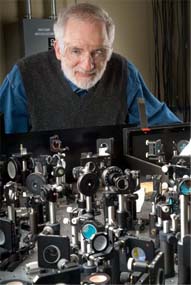NREL quantum dot solar cell reaches efficiency level over 100%
 For the first time a solar cell has been able to produce more electrons than the number of photons that enter the device, reaching a external quantum efficiency reached level of 114 percent. The research, being conducted at the National Renewable Energy Laboratory (NREL) could lead to solar cells that are nearly 30 percent more efficient than what’s currently possible.
For the first time a solar cell has been able to produce more electrons than the number of photons that enter the device, reaching a external quantum efficiency reached level of 114 percent. The research, being conducted at the National Renewable Energy Laboratory (NREL) could lead to solar cells that are nearly 30 percent more efficient than what’s currently possible.
“The point is that we show MEG [i.e., multiple exciton generation] is a real effect in operating PV cells and for cells that are optimized for MEG the theoretical PCE [i.e., power conversion efficiency] can be [almost] 30% above the theoretical PCE for present day PV cells,” said Dr. Arthur Nozik, an NREL senior research fellow and University of Colorado Chemistry Department professor adjoint. Nozik also co-authored “Peak External Photocurrent Quantum Efficiency Exceeding 100 percent via MEG in a Quantum Dot Solar Cell,” which recently appeared in Science Magazine. Other co-authors include: NREL scientists Octavi Semonin, Joseph Luther, Sukgeun Choi, Hsiang-Yu Chen, Jianbo Gao and Matthew Beard.
The MEG technology allows an absorbed high-energy photon to produce more than one electron-hole pair per absorbed photon. “The PV cell is constructed from semiconductor quantum dots and not bulk semiconductors. In general, to enable MEG the photons have to have energies at least twice the bandgap (to obey the law of conservation of energy),” Nozik said.
The device is focused on harnessing energy from the higher-energy spectrum of light. “The high energy region in these experiments that generate MEG is in the violet to near UV region of the solar spectrum,” Nozik said. “This is a step forward toward producing quantum dot solar cells that do show a PCE above that possible with present day solar cells. But this will take time and more research.”
The cells produced with this research had a PCE in the range of 4 percent to 5 percent, according to Nozik. But the research and the fact that they were able to produce the cell was an important step toward making next generation quantum dot technology. “All aspects of the MEG mechanism are not yet fully understood. More theory and experiments are needed” he said.
Among other reasons quantum dot-based solar cells are being looked at as a next-generation photovoltaic is because they can be deposited in roll-to-roll method using technologies similar to printing paper, making such modules much cheaper to produce than silicon-based PV.
Image of Dr. Nozik courtesy of NREL



